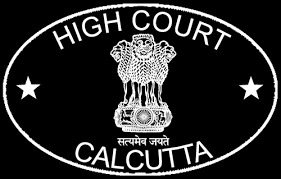1. Heard Shri Shambhu Chopra, learned Counsel for the Department. Shri S. D. Singh appears for the Respondent-Assessee.
2. In this wealth-tax appeal filed u/s 260A of the income tax Act, 1961 the Commissioner of income tax, Kanpur, has posed a question of law to be decided by the High Court:
Whether the hon''ble income tax Appellate Tribunal, in view of Rule 14(2)(b) of Part D of Schedule III to the Wealth-tax Act was justified in holding that the value of the properties should have been taken at the book value as these properties were business assets, without appreciating the fact that the fair market value of these properties was higher by more than 20 per cent. of its book value and as per Rule 14(2)(b) read with Rule 20 their fair market value should have been adopted for the wealth-tax purposes ?
3. The delay of 23 days in filing the appeal has been sufficiently explained, and is accordingly condoned. Since the matter is pending in this Court for the last ten years, we have heard the appeal on the merits.
4. The brief facts, giving rise to this appeal given in the statement of facts, are given as follows:
1. Briefly stated the facts of the case are that the return declaring net wealth of Rs. 14,40,52,704 was filed by the Assessee for the assessment year 1993-94 showing wealth under the following heads:
Immovable: Rs. Rs.
(i) Lease hold land ------- 1,94,52,284
(ii) Building
(a) Factory 17,10,999
(b) Other than factory 3,83,45,071 4,56,00,070
Movable:
(i) Plant and machinery 7,66,31,638
99,12,712
(ii) Vehicles
----------------------
14,40,52,704
2. While completing the assessment u/s 16(5) of the Wealth-tax Act, the Assessing Officer found the value of the immovable properties was much more than that what had been shown by the Assessee. In view of the valuation report of the approved value furnished by the Assessee itself, it was held that the fair market value of these properties was Rs. 5,37,55,706 as against Rs. 1,94,52,284 shown by the Assessee. These values were arrived at by applying land rates prevailing in that area.
3. Against the order of the Assessing Officer the Assessee filed an appeal with the learned Commissioner of Wealth-tax (Appeals). The learned Commissioner of Wealth-tax (Appeals) vide his order dated January 1, 1999, held that these plots of land are business assets and accordingly their values should be taken at Rs. 1,94,52,284 as disclosed by the Assessee in the balance-sheet, in view of Rule 14 of Schedule III.
4. Against the order of the learned Commissioner of Wealth-tax (Appeals), the Department filed a second appeal with the hon''ble income tax Appellate Tribunal. The hon''ble income tax Appellate Tribunal vide their order dated January 14, 2000 upheld the finding of the learned Commissioner of Wealth-tax (Appeals) by holding that the assets being business assets, their value was to be determined as per Rule 14 of Schedule III and not as per Rule 20 of the Schedule and accordingly they dismissed the Departmental appeal.
5. The abovementioned order of the hon''ble income tax Appellate Tribunal is not acceptable in law inasmuch as the provisions of Rule 14(2)(b) says that where the value of any assets referred to in Clause (a), determined in accordance with the provisions of the Schedule as applicable to that particular asset or if there are no such provisions, determined in accordance with Rule 20, exceeds the value arrived at in accordance with Clause (a) by more than 20 per cent. then the higher value shall be taken to be the value of that asset. In the instant case the value of these pieces of land has been arrived at a figure of Rs. 5,37,55,706 by an approved value submitted by the Assessee itself which is much higher than the value of Rs. 1,94,52,284 disclosed by the Assessee. Therefore the provisions of Rule 14(2)(b) enable the Assessing Officer to adopt the fair market value of these properties. Further it has been held by the hon''ble Allahabad High Court in the case of
Rule 2A providing for necessary adjustments are per Rule 2B(2) when read with the definition of net wealth and Section 7 of the Wealth-tax Act, only carries out the purpose of the Act, which is to tax the market value of the asset and not its book value, and therefore, it cannot be said that rules are repugnant and contradictory to the provisions of the Act.
6. In the above judgment the hon''ble Allahabad High Court followed the decision of the hon''ble Supreme Court in the case of
5. The income tax Appellate Tribunal, deciding the Wealth-tax Appeal Nos. 1 and 2 of 1998, and Wealth-tax Appeal No. 9 of 1999 relating to the assessment years 1991-92, 1992-93 and 1993-94, was concerned with the valuation of the immovable properties in the books of account of the asses-see as business asset. The Tribunal agreed with the counsel for the Assessee and held that the asset being business asset, its value was to be determined as per Rule 14 of Schedule III to the Wealth-tax Act, and not as per Rule 20 and did not find any infirmity in the order of the Commissioner of Wealth-tax (Appeals), which had found that the value of the land in the balance-sheet was disclosed by the Appellant at Rs. 1,94,52,284, and therefore according to Rule 14(2)(a)(ii) of Schedule III, no depreciation was admissible. The book value, thus should be taken as a value of the properties for the purposes of wealth-tax.
6. Shri Shambhu Chopra submits that the assessing authority was justified in valuing the immovable properties at Rs. 5,37,55,706 for the reason that when the Assessee was asked to give details of the assets vide notice dated March 14, 1996, after many reminders it furnished the area of land, and also a valuation report during the assessment proceeding for the assessment year 1994-95. From these documents he found the valuation of the immovable property for the purposes of assessment under the Wealth-tax Act and issued notices of demand and challan. He also initiated penalty proceedings u/s 18(1)(c) and Section 18(1)(b).
7. Shri Shambhu Chopra, learned Counsel appearing for the Department submits that Schedule III provides for the rules for determining the valuation of assets. Rule 14(2)(b) provides that where the determination exceed, the value arrived at in accordance with Clause (a), by more than 20 per cent., in such case the higher value has to be taken as the valuation of asset. He would submit that the valuation could not have increased by five times within an assessment year, and thus the assessing authority finding the difference, rightly relied upon the method of valuation under Rule 20. He has relied upon the judgment in
8. Shri Shambhu Chopra has further relied upon the judgment in
9. The third case relied upon by
10. Shri S. D. Singh, learned Counsel appearing for the Assessee would submit that in case of valuation of immovable property, Rule 3 in Part B of Schedule III provides for its valuation to be determined u/s 7 of the Wealth-tax Act, 1957. In the cases where the conditions provided under Rule 8, Rule 3 are attracted the value of the property has to be determined in the manner laid down in Rule 20. Rule 8 reads as follows:
8. Rule 3 not to apply in certain cases.--Nothing contained in Rule 3 shall apply,--
(a) where, having regard to the facts and circumstances of the case, the Assessing Officer, with the previous approval of the Joint Commissioner, is of opinion that it is not practicable to apply the provisions of the said rule to such a case ; or
(b) where the difference between the unbuilt area and the specified area exceeds twenty per cent. of the aggregate area ; or
(c) where the property is constructed on leasehold land and the lease expires within a period not exceeding fifteen years from the relevant valuation date and the deed of lease does not give an option to the lessee for the renewal of the lease, and in any case referred to in Clause (a) or Clause (b) or Clause (c), the value of the property shall be determined in the manner laid down in Rule 20.
11. Rule 14(2)(b) provides that where the value of any of the assets referred to in Clause (a), namely where the depreciation is admissible or where no depreciation is admissible, its book value, and in case where the closing stock its value is adopted for the purposes of assessment, is determined in accordance with the provisions of this Schedule (the Rules under Schedule III) as applicable to that particular asset, or if there is no such provisions, the value determined in accordance with Rule 20 exceeds the value arrived at in accordance with Clause (a) by more than 20 per cent. then the higher value shall be taken to be the value of that asset. He would submit that in case of immovable property the question of resorting to the valuation under Rule 20, does not arise under Rule 14(2)(b). It could only arise where the conditions given in Rule 8 are attracted. In the present case he submits that none of the conditions, Clauses (a), (b) and (c) of Rule 8 are applicable to the immovable property, subject to determination of its value for assessment.
12. The three decisions cited by Shri Shambhu Chopra are not applicable to the facts of the present case. In this case we are concerned with the immovable property (land) being business asset of the Assessee. The value of the immovable property, as business asset of the Assessee has to be taken in accordance with Rule 3 of Part B in Schedule III appended to the Wealth-tax Act. It is only if any condition under Rule 8 is satisfied, that the assessing authority could have referred to and determined the value under Rule 20. The provisions of Rule 14(2)(b) are not applicable to the present case as no depreciation is admissible to the asset being immovable property as shown in the account books of the Assessee with a definite value.
13. The anxiety of Shri Shambhu Chopra on the difference for valuation between the assessment years 1993-94, 1994-95 is appreciable, but the valuation of the immovable property as business asset, has to be determined in accordance with the rules, and not on assumptions.
14. The question of law is answered accordingly and the wealth-tax appeal is dismissed.

